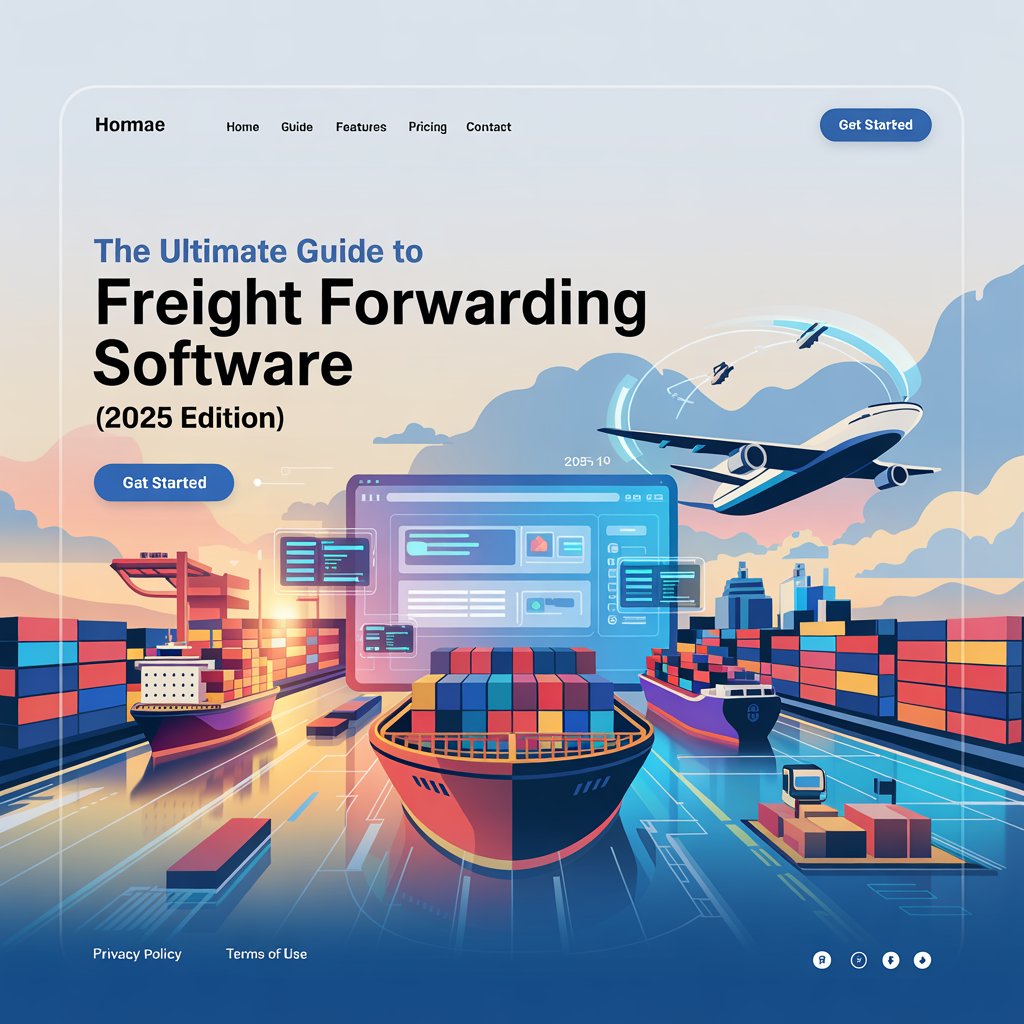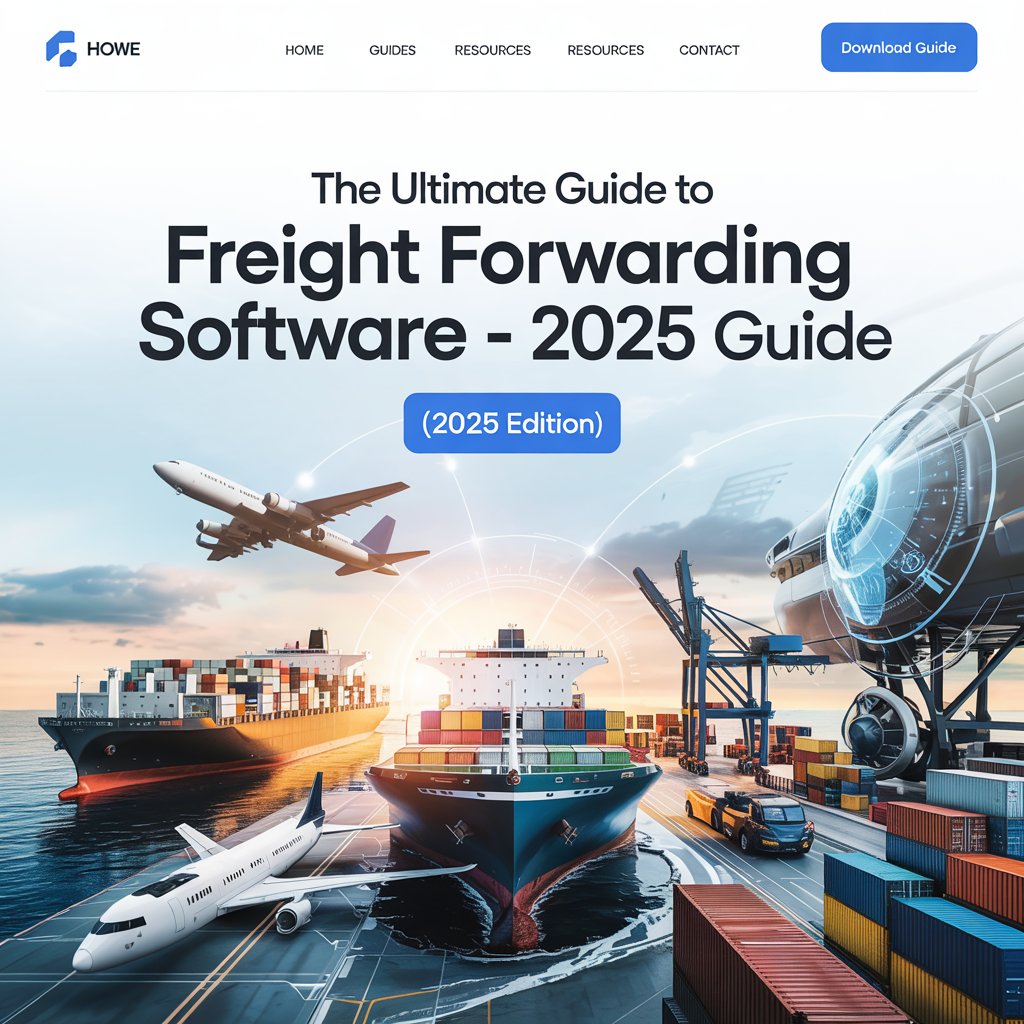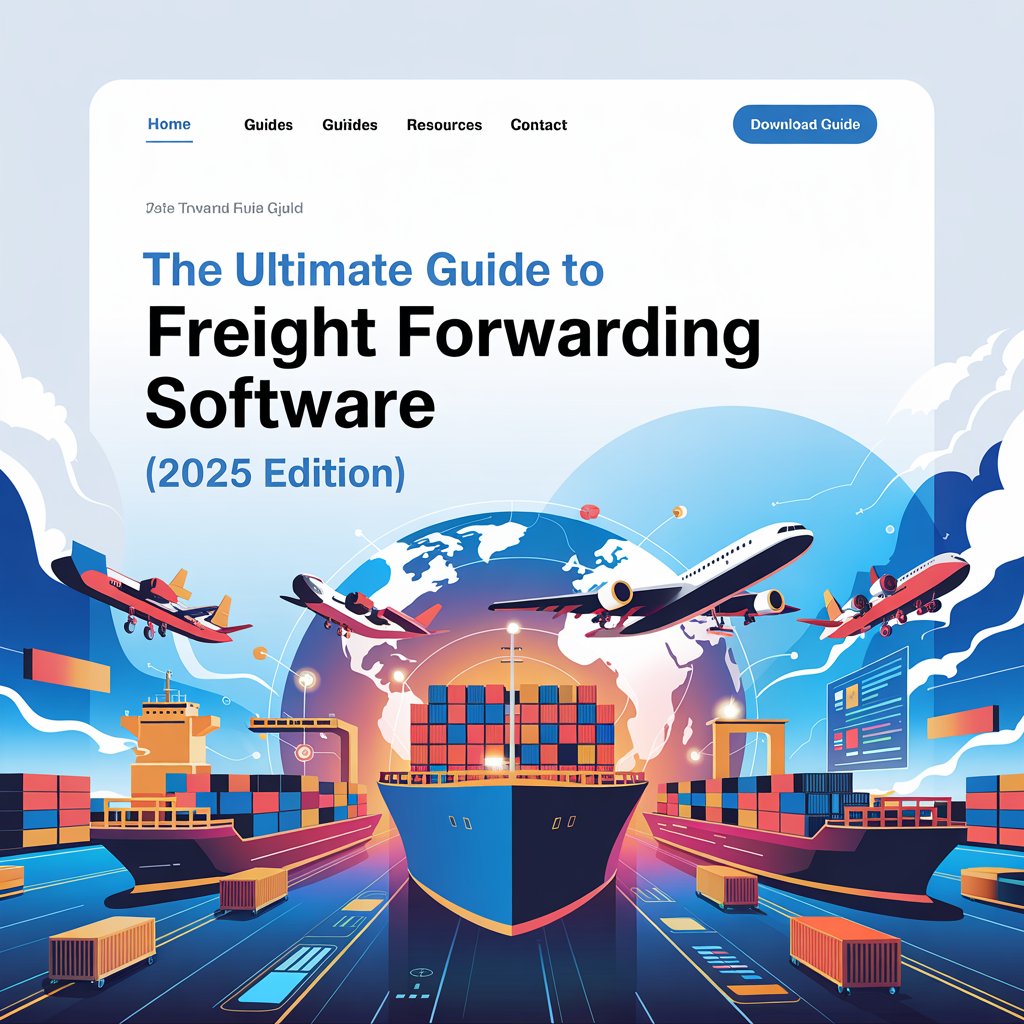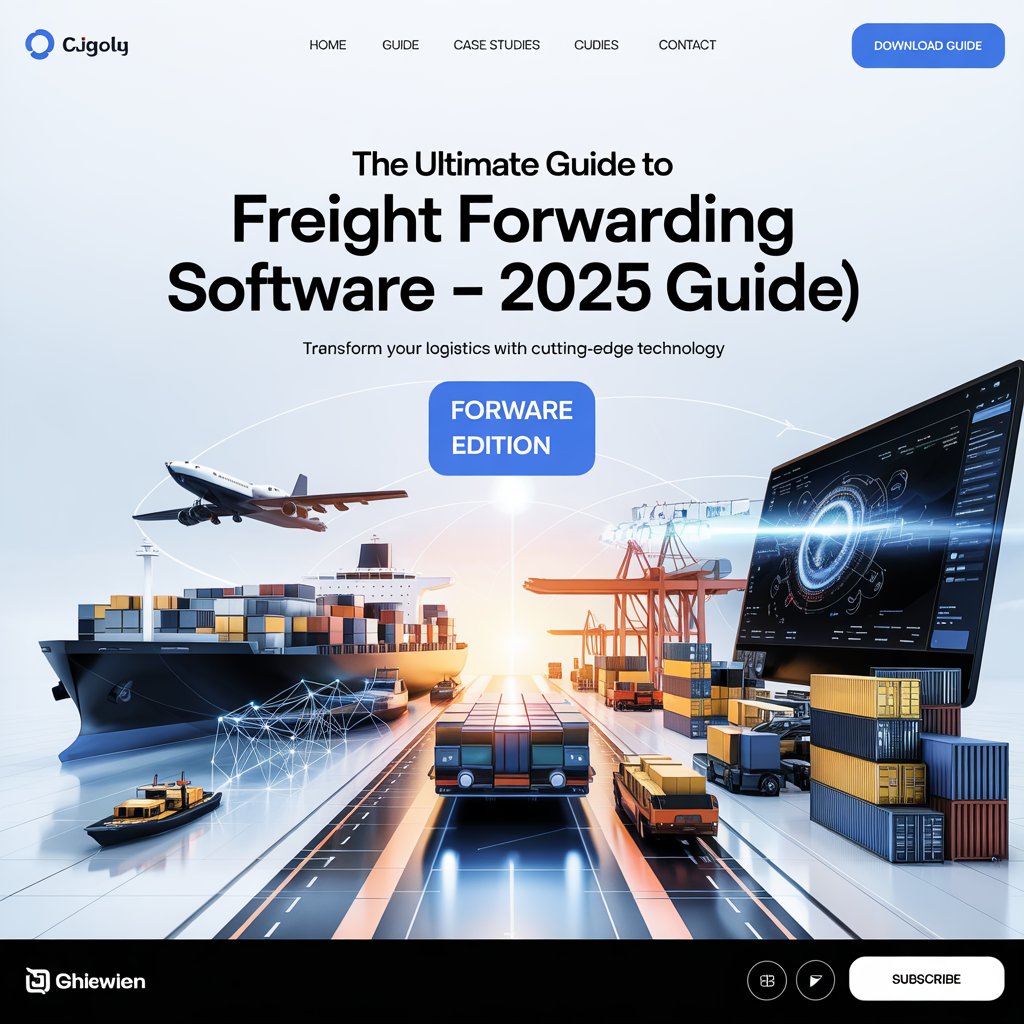The Ultimate Guide to Freight Forwarding Software (2025 Edition)

What Is Freight Forwarding Software?
Freight forwarding software is a digital platform that helps logistics providers manage the entire supply chain cycle — from quoting and booking to documentation, customs clearance, and cargo tracking.
Its goal? Efficiency, automation, and visibility.
✅ Book shipments faster
✅ Reduce paperwork errors
✅ Track cargo in real time
✅ Enhance collaboration with customers and partners
Core Features You Should Expect
The best freight forwarding platforms include tools that simplify daily operations. Here’s what you should look for:
✈️ Shipment Management
- Multi-modal (air, sea, land) handling
- Route planning and cost estimation
🧾 Document Automation
- Bill of Lading, invoices, packing lists
- Digital signature and e-doc support
📦 Cargo Tracking
- Real-time shipment status
- GPS or EDI-based updates
📋 Quoting & Invoicing
- Automatic rate calculations
- Customizable quotes and templates
🔐 Compliance & Customs
- Document generation for customs
- Integration with government systems
🤝 CRM & Client Portal
- Customer communication tools
- Branded portal with real-time updates
📊 Analytics & Reporting
KPIs, delivery metrics, profitability tracking

Benefits of Using Freight Forwarding Software
Implementing freight forwarding software isn’t just about keeping up — it’s about leading in a competitive market. Here’s how it helps:
1. 📈 Improved Operational Efficiency
Automates repetitive tasks, reducing manual input and errors.
2. ⏱️ Faster Turnaround
Accelerates quoting, booking, and documentation processes.
3. 🔎 End-to-End Visibility
Gives clients and staff access to live updates.
4. 🤝 Better Collaboration
Centralizes communication between teams, clients, and partners.
5. 💡 Data-Driven Insights
Helps you make smart business decisions based on real data.
Who Needs This Software?
Freight forwarding software is essential for:
- International freight forwarders
- NVOCCs (Non-Vessel Operating Common Carriers)
- 3PL providers
- Customs brokers
- Small logistics startups looking to scale
- Whether you handle 10 shipments a month or 1,000, automation saves time and money.

How to Choose the Right Freight Forwarding Software
When evaluating platforms, consider the following:
✅ Ease of Use – Is the interface intuitive?
✅ Scalability – Will it grow with your business?
✅ Integrations – Can it connect to customs, carriers, ERPs?
✅ Support – Is there live support or training?
✅ Security – Does it comply with global data standards?

Spotlight: Linbis Freight Forwarding Software
At Linbis, we designed our freight platform for simplicity, power, and scalability. Here’s what sets us apart:
- 🧠 User-friendly interface
- 📦 Full shipment lifecycle tools
- 📲 Mobile and desktop access
- 🔐 Cloud-based, secure infrastructure
- 📊 Real-time reports and notifications
- 🤝 White-labeled client portal
Whether you’re scaling a growing agency or optimizing a global network, Linbis gives you the tools to streamline and succeed.
The Future of Freight Forwarding Software in 2025
With AI, machine learning, and blockchain shaping logistics, the future of freight forwarding software looks promising:
- AI-powered route optimization
- Predictive analytics for delays
- Smart contracts via blockchain
- Voice-based data entry
- Enhanced IoT integration for cargo sensors
Staying ahead means embracing tech before your competitors do.
Final Thoughts
Freight forwarding software is no longer optional — it’s essential. It empowers freight forwarders to operate smarter, deliver faster, and serve better. Whether you’re just exploring or ready to implement, this guide is your roadmap to digital transformation.
🌟 Ready to upgrade your freight operations? Discover what Linbis can do for you.
🔗 Visit Linbis.com to schedule a demo today.
